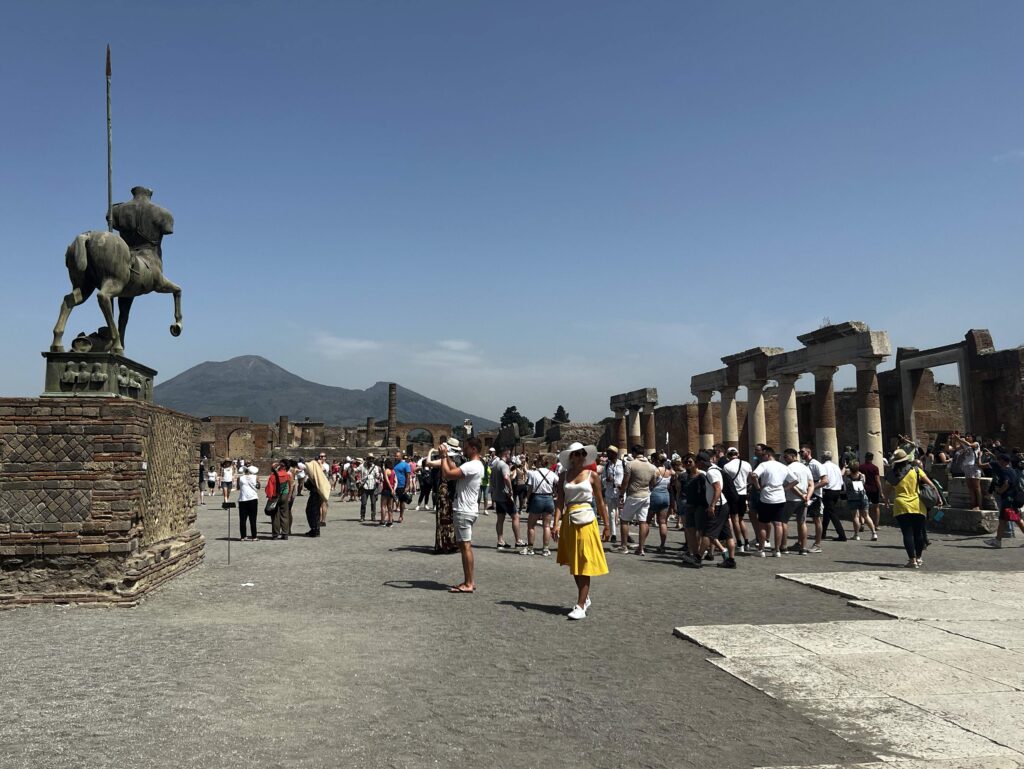When I was a young kid growing up in Bradenton FL, one of the most exciting annual events was a parade honoring Hernando de Soto, who’d landed in the area in 1539. I didn’t care about that, of course. Nor did I care that a few decades later, Spain left its mark in St. Augustine, Florida, evident even today.

For me, the parade was the men dressed up as Spanish conquistadores who tossed coin-shaped chocolates wrapped in gold foil to families lined up along the road. We then moved to Tallahassee, where, like all fourth graders across the country, I learned about state history. One of my favorite stories was of Ponce de León, said to have come to Florida in search of the fountain of youth. But although he didn’t find it (and may not have even been looking for it), I was proud of the fact that if it indeed existed, it might be in my own home state. I remember thinking, “Maybe I can find it!”
Of course, the Spanish legacy in Florida is more enduring than parades and childhood fantasies, none more so than St. Augustine, which claims to be the oldest city in the US. Although Ponce de León claimed La Florida for Spain after his arrival in 1513 in hopes that the region might contain some of the riches found in Spain’s other American colonies, Florida turned out to have none of those. It did, however, offer a strategic location for Spanish ships plying the waters between the Americas and Europe.

The town of St. Augustine was founded in 1565, 42 years before the English colony at Jamestown VA and 53 years before the pilgrims landed at Plymouth Rock. The Spaniards were hopeful that St. Augustine could serve as a potential outpost for turning a profit in agriculture, fisheries, naval stores and ship building. For protection against British colonies, St. Augustine’s Castillo de San Marcos was built in the 1670s and today is the oldest masonry and only extant 17th-century fort in North America. It was constructed of a porous limestone called coquina, which turned out to be the perfect choice for cannon warfare because rather than shattering, the coquina walls absorbed cannonballs, kind of like a bb gun’s bullets might be swallowed by thick Styrofoam. Spain ruled over Florida from 1565 to 1821, except for 20 years (1763-1784) when the British flag flew over the region. In 1821, Florida was purchased by the United States.
In addition to the fort, St. Augustine has another long-time attraction, Ponce de Leon’s Fountain of Youth Archaeological Park, which recreates the settlement founded by Pedro Menendez de Aviles in 1565. There’s even a fresh-water spring here, said to have quenched Ponce de León’s thirst. Tourists have been visiting the spring since 1868, drinking its waters in hope of eternal youth. If you want, you can even buy a bottle of the spring water with “Fountain of Youth” written on it. I’m not sure whether it works, but it’s possible both of my Floridian grandmothers could have visited what is touted as Florida’s oldest tourist attraction. One lived to 97 and the other to 99. On the other hand, Ponce de León made it only to 47.
Sadly, Florida’s natural springs are under siege, with pollution, increased population and rising sea levels all playing a part in their demise. Hope may spring eternal, but the Fountain of Youth’s days may be numbered.





